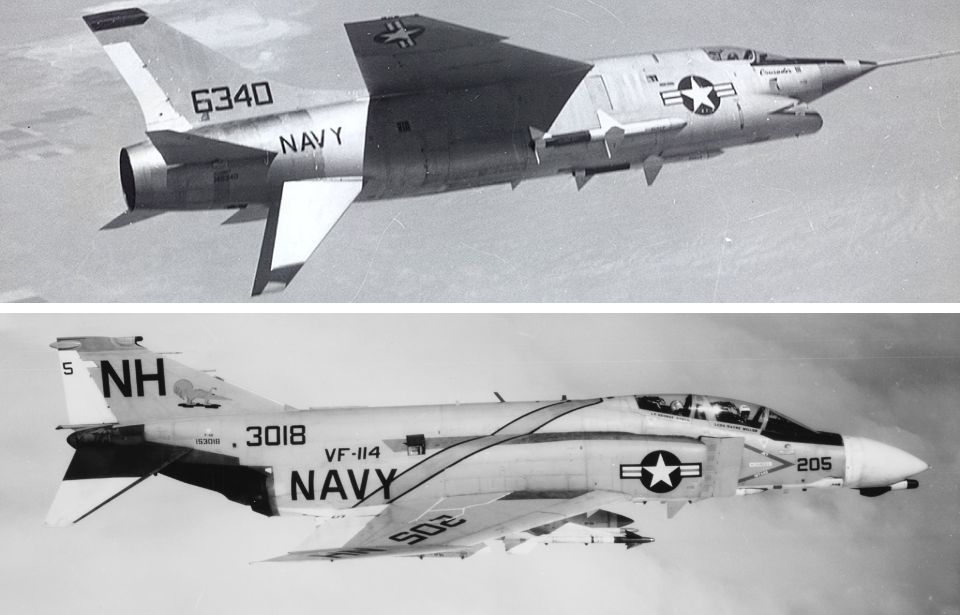In 1976, the US Navy retired its fleet of Vought F-8 Crusaders. The aircraft had an illustrious career, with the greatest kill ratio of all American fighters during the Vietnam War. This meant it wasn’t going to be easy to replace it. The McDonnell Douglas F-4 Phantom II and the XF8U-3 Crusader III were the two vying for the spot. Ultimately, the Navy chose the former, which remained in active duty with the service until 1987, while the XF8U-3 was provided to NASA as a research aircraft.
This eventually led to tensions between the two, with NASA pilots going so far as to bully naval aviators.
Vought XF8U-3 Crusader III
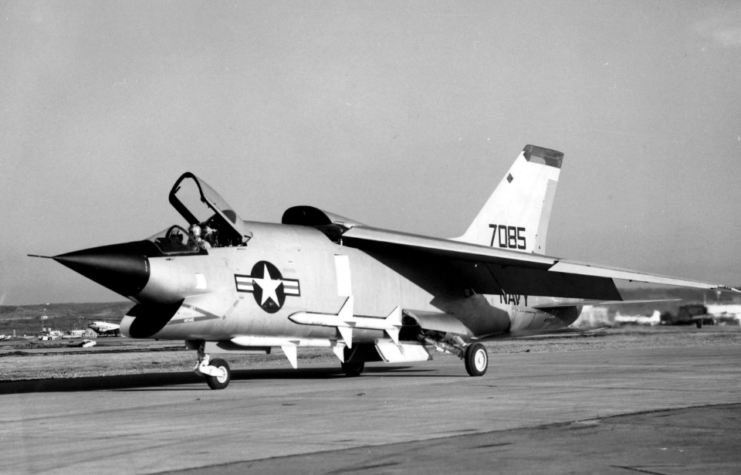
Despite a few differences, such as an angled air intake and the addition of two ventral fins at the rear of the aircraft, the XF8U-3 Crusader III looked almost identical to earlier F8Us. That being said, it was larger, more powerful and faster.
The F8U-3 was powered by a single Pratt & Whitney J75-P-5A afterburning turbojet, which produced 16,500 pounds of dry thrust and 29,500 pounds of thrust with afterburner. The XF8U-3 could reach a maximum speed of Mach 2.39 at 50,000 feet, and it had a range of 560 nautical miles.
When compared to previous F-8s, the difference was obvious. The F-8E, for instance, only produced 18,000 pounds of thrust with afterburner and could reach a maximum speed of just Mach 1.8.
McDonnell Douglas F-4 Phantom II
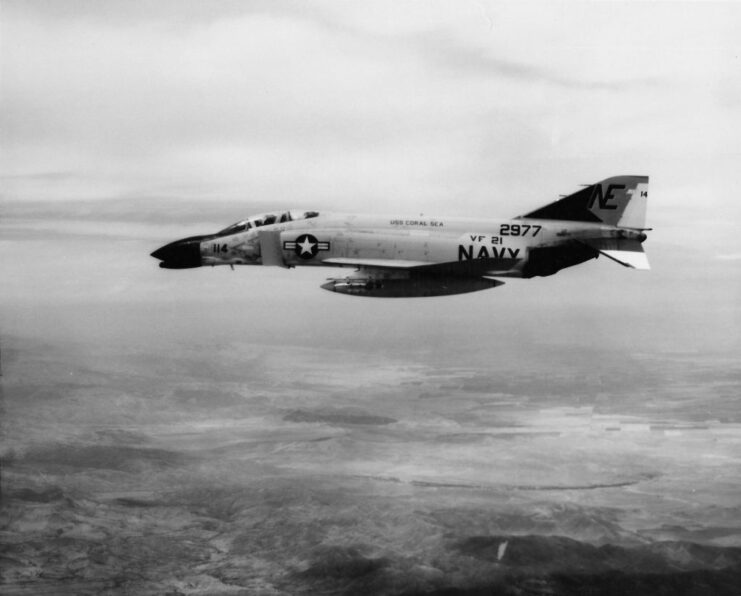
The F-4 Phantom II was developed to be both a fighter-bomber and long-range supersonic jet interceptor. The plan was initially to base the design on the F3H Demon, just with more firepower, but the Navy later approached McDonnell with requirements for an all-weather fleet defense interceptor.
The final design was powered by two General Electric turbojets, each capable of producing around 18,000 pounds of thrust with afterburner. The F-4 could reach a top speed of Mach 2.2, making it among the fastest jets of its time, and it featured a number of weapons that gave it an advantage in the field. It was built to carry 18,000 pounds of missiles and bombs on its nine hardpoints, and later versions were equipped with the M61 Vulcan.
A number of variants were built over the F-4’s service life, and the aircraft was eventually adopted by the US Marine Corps and Air Force.
NASA got the aircraft the US Navy didn’t want
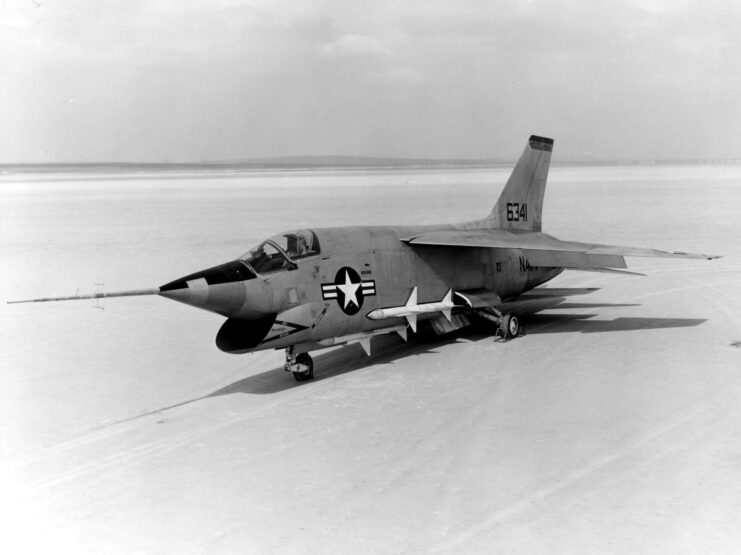
The XF8U-3 Crusader III was ultimately far more agile than the F-4 Phantom II. While many believed the former could fly circles around the latter, the Navy decided the F-4 would replace its fleet of F-8 Crusaders. Among the reasons for this were the multiple roles the F-4 could fill, in addition to its much greater payload.
The XF8U-3, when compared to the F-4, was a far more complicated aircraft. The former only had a single pilot to operate all of its systems. In contrast, the latter had a pilot and radar intercept officer, which allowed for the workload to be shared.
The project was canceled after five XF8U-3 Crusader IIIs were built. All five were sent to NASA for atmospheric testing, where it was seen as the ideal aircraft, due to its ability to fly above 95 percent of the Earth’s atmosphere.
Did NASA pilots bully the US Navy in the air?
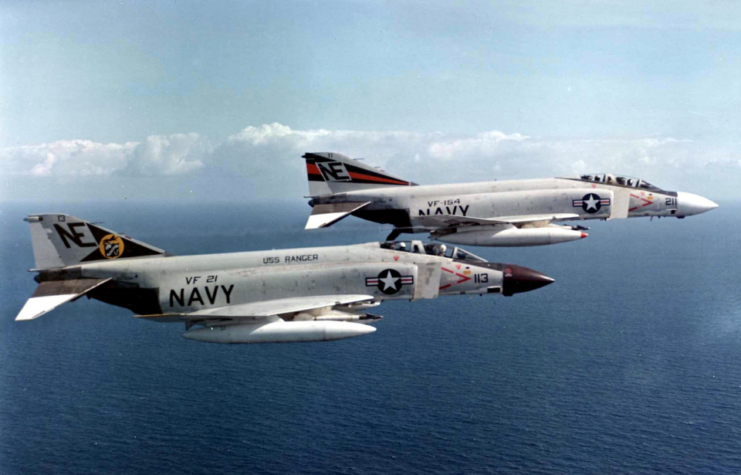
Naval Air Station Patuxent River, Maryland is located at the mouth of the Patuxent River, on the Chesapeake Bay. It’s home to Naval Air Systems Command, the US Naval Test Pilot School and the Atlantic Test Range, and serves as a base for testing and training.
The greater speed and agility of the XF8U-3 Crusader III ultimately saw NASA aviators have the last laugh. Flying out of NAS Pax River, Navy Phantom F-4 IIs conducted mock dogfights, during which the NASA-flown XF8U-3s would intercept the fighters and show up the naval aviators.
Want War History Online‘s content sent directly to your inbox? Sign up for our newsletter here!
After being embarrassed by these dogfights, the naval aviators complained to the top brass – AKA, the Pentagon. Not long after, it was requested that the NASA pilots stop the harassment.
